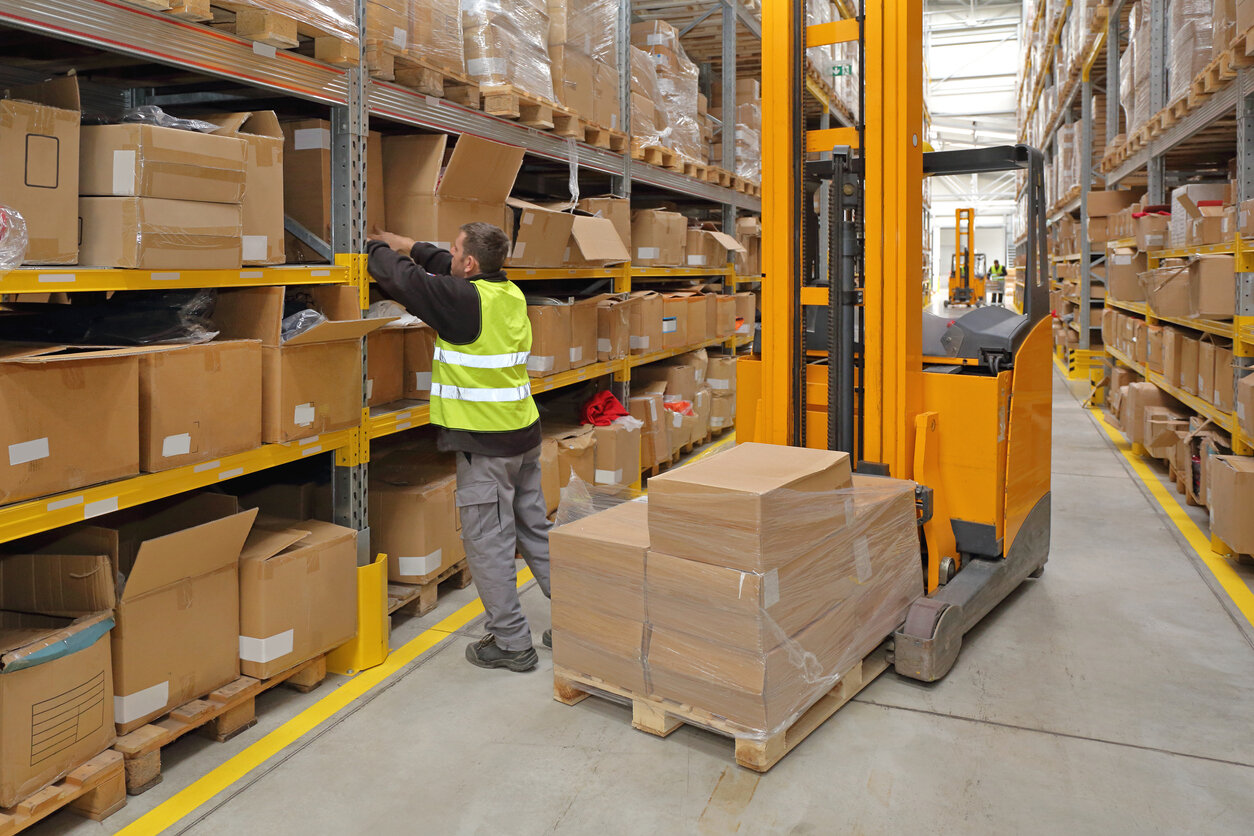Embracing logistical complexity is the recipe for success. Companies that take steps to properly manage their supply chain enjoy up to a 15% savings on associated costs. But how do we get to a point where we are masters of our own logistical destiny? 3PL and 4PL are leading the way.
Logistics used to be simple. It all started with 1PL where the manufacturer delivered their product directly to customers. As technology began to blossom and trade networks became more expansive, manufacturers began hiring transport companies to deliver their products for them. This marked the advent of 2PL. Fast-forward to modern-day where supply chain management has become infinitely complex. According to Forbes, 65% of executives working in logistics believe that “tectonic” shifts in supply chain management occur periodically. That number is commensurate with current market trends: 48% of logistics managers currently feel a push to reimagine their warehousing locations and practices to address shifting economic demands, and 70% believe that supply chain logistics will become intimately intertwined with exceptional customer service in the coming decade.
3PL Versus 4PL
Before discussing supply chain management solutions, it’s necessary to get a firm understanding of how simple and traditional shipping methods (2PL) evolved into modern-day logistics. To the uninitiated —and even long time industry professionals— there’s a large amount of confusion about the difference between 3PL and 4PL.
What is 3PL?
If 2PL cedes control of shipping to another vendor, then 3PL takes that idea a step further. With a 3PL model, your company turns over multiple elements of their logistical process to a third party. Those functions can include:
-
Warehousing
-
Pick and pack
-
Order fulfillment
-
Shipping and delivery
-
Freight forwarding
Working with a 3PL allows your company to offload tasks that are logistically complex while still keeping you in the loop. With 3PL, your company maintains oversight of your supply chain without shouldering the burden of its execution.
For example, a typical 3PL partner might take control of your company’s inventory (without taking actual ownership) and store it at their own distribution center. They might employ shipping efficiency techniques such as cross-docking or kitting to streamline your order fulfillment process. Many 3PL providers have their own physical assets, such as a fleet of shipping vehicles, and will take care of your company’s transportation needs. Most 3PL providers offer services bundled together or à la carte.
What is 4PL?
Understanding what 4PL is can be more difficult because, at its core, 4PL is more abstract. The typical 4PL service encompasses all the logistical considerations found in 3PL, but it adds in elements of supply chain optimization and consultancy.
It can be difficult to envision how 4PL looks, but it helps to think of it in terms of your supply chain. Whereas 3PL takes control over a single link or a handful of links, 4PL takes custody of the entire chain, including the points where the chain is anchored, resource procurement, and the end-user.
4PL’s aim is to foster better productivity out of every stage in your supply chain. 4PL includes services such as:
-
Consulting
-
Data and analytics
-
Service coordination
-
Transition planning
-
Sourcing
-
Inventory planning
-
Asset management
-
Overall logistical strategy
The aims of a 4PL provider are broader in their scope because they are focused on shaping the entire structure of your supply chain operations. In other words, 4PL is both programmatic and structural in nature.
Key Differences Between 3PL and 4PL
The greatest difference by far between 3PL and 4PL is the scope of the solutions that they offer. 3PL offloads portions of your company’s logistical workflows, but your company still holds onto day-to-day oversight of the process. 4PL takes over your logistics in its entirety, making your company an observer and high-level manager. You’ll no longer deal with the day-to-day minutiae and will only engage in broad, programmatic decision-making.
It should be noted that 3PL providers often have their own physical assets such as fleet vehicles. 4PL doesn’t focus on holding physical assets, but rather, it figures out ways to better leverage your assets for you, or in some cases, where to source the most efficient and cost-effective alternatives instead.
Back to our chain link example, a 3PL provider assumes the role of a link within the chain while a 4PL provider oversees the chain itself. That means a 3PL is just one point of contact in your logistics continuum whereas 4PL becomes a single point of contact for your entire supply chain methodology.
The Advantages of Each Methodology
It’s important to note that neither 3PL nor 4PL is the better system; they are built to suit different purposes. 3PL solutions are geared more toward small businesses and startups. They have a relatively low-cost upfront, and the cost savings provided by their effectiveness can help sustain your business as it grows and establishes a long-term logistics strategy. 4PL, on the other hand, is geared toward larger, established companies with complex supply chains. Because 4PL attacks logistics from a structural point of view, it provides the perfect alternative for a larger company looking to shore up its existing operations.
In terms of vendor management and coordination of services, 4PL edges out 3PL in terms of value. A 3PL service provider acts as an intermediary between aspects of your supply chain. They become another point for you to manage. With 4PL, the service provider assumes control of your entire logistics operation, becoming the single point of contact for the entire process.
Both 3PL and 4PL share one common disadvantage: they take control out of the process out of your company’s hands, especially as it relates to the customer experience. However, that disadvantage is easily mitigated through the advantages that outsourcing brings. Both methods save you money, 3PL through its attention to reducing shipping costs, and 4PL in streamlining your processes. Both operational models free you up to address customer service concerns, and other business-critical tasks, yourself.
Choosing the Right Model For Your Logistics
In the world of logistics and supply chain management, there is no one-size-fits-all solution. Before you decide what elements you should outsource, you need to analyze your needs and the volume of incoming business before settling on the right combination of outsourced services. The advantages of methodologies like 3PL and 4PL can be confusing as their elements often overlap. With new and emerging operational models, like 5PL on the horizon, modern options are no less complex. That’s where a trusted logistics partner like Symbia Logistics comes into play. At Symbia Logistics, we specialize in providing 3PL services but are able to create a custom, hybrid program that incorporates elements of 4PL such as project management, network optimization, transportation analysis, IT services, and supply chain strategy support tailored specifically for your company’s needs.
We’d love to help you streamline your business’s supply chain efficiency. Please contact us today to schedule a free consultation.





